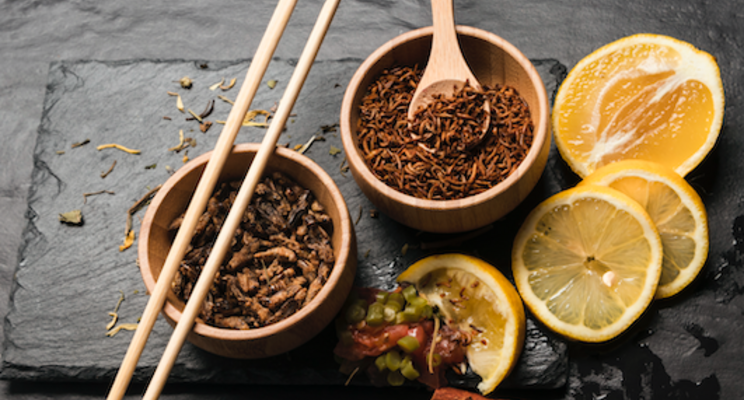The next alternative protein source: Insects
Added on 11 November 2021

With indoor farms already growing the most delicate and challenging of crops, what's in store for the industry next?
How about insects?
Demand for animal protein is increasing the strain on the environment. Roughly 80% of the world's farmland is used to raise and feed livestock, even though animals only account for 18% of global calorie consumption.
With the ever-increasing world population, there is an urgent need for "low-resource solutions to feed humans and other animals using less land and water," says Wendy Lu McGill, Interim Executive Director of the North American Coalition for Insect Agriculture (NACIA). She adds that "insects are an untapped natural resource with the potential to change our agricultural systems to be more safe and sustainable."
Even though insect farming is still a niche industry, tons of startups have entered the market.
In AgFunder's latest edition of its annual Farm Tech Investment Report, Novel Farming Systems was the second best-funded agtech category worldwide last year. Two French startups in the category, which are raising insects for animal and plant nutrition purposes, raised rounds in excess of $100 million: nsect and InnovaFeed.
These investments make it clear that insect agriculture is gaining traction. On a whole, the market is expected to reach $4.6 billion by 2027.
How can insect agriculture revolutionize the food industry?
With a deep passion for sustainable agriculture, and how it relates to human & animal nutrition, McGill highlights that "farming insects is a very efficient way to create nutritionally-dense proteins and also soil enrichments." Studies have proven that besides fats and proteins, insects are also an excellent source of vitamins and minerals.
Additionally, in thinking about the environmental impact of insect agriculture, "insects have greater food conversion efficiency and produce lower greenhouse gas emissions (GHGEs), while requiring less water and land compared with their vertebrate counterparts in traditional animal husbandry." The Food and Agriculture Organization of the United Nations (FAO) notes that insects are more efficient than other animals at converting their food into meat - "on average, insects can convert 2 kg of feed into 1 kg of insect mass, whereas cattle require 8 kg of feed to produce 1 kg of body weight gain."
To further their environmental sustainability, insect farms can also harness waste heat and steam and feed their insects with an upcycled corn-based byproduct, like InnovaFeed. Additionally, insect excrement can also be used as a crop fertilizer, which is free from antibiotics.
McGill adds that "some of the safety benefits come in the fact that insects are reared in indoor, controlled environments that can be kept extremely clean and sanitary, versus challenges large scale animal agriculture faces in this regard. Insects are 'ectothermic' or rely upon external heat sources to control their body temperature. Different species require varying levels of optimal humidity, and finally, it is crucial to keep unwanted pests out of rearing facilities. All of these factors make controlled environment systems crucial to rearing insects."
Click here to read more.
Editor's Note: The following information is derived from an interview Agritecture conducted with Wendy Lu McGill, Interim Executive Director of the North American Coalition for Insect Agriculture (NACIA).
Photo created by freepik - www.freepik.com
Source: Agritecture
More news















